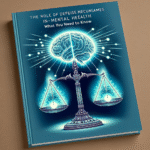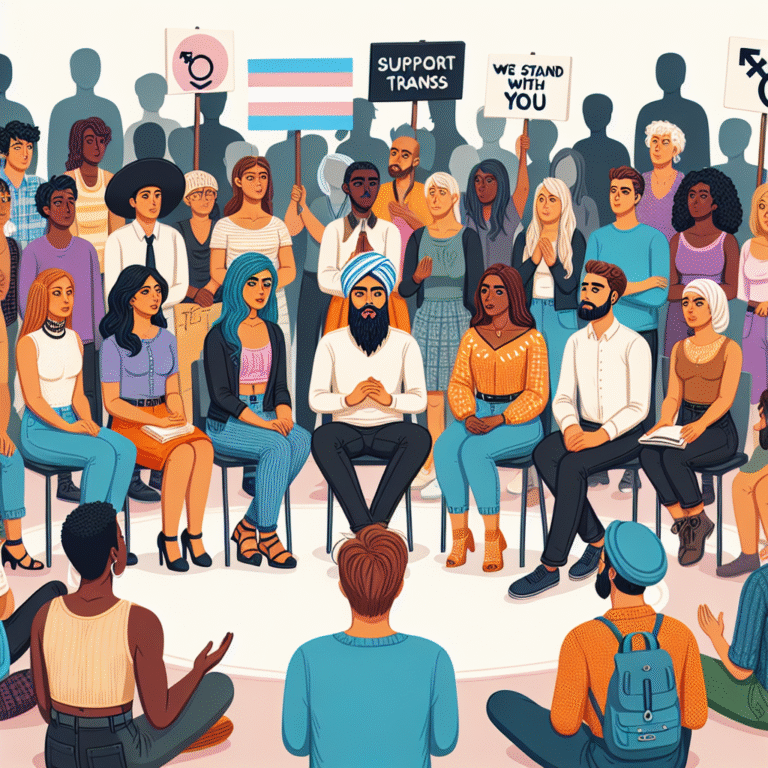
Mindfulness Made Easy: Essential Meditation Techniques for Beginners
Introduction
In our fast-paced, information-saturated world, stress and anxiety are common companions in our daily lives. Fortunately, mindfulness has emerged as a powerful tool to help individuals regain control of their mental health and cultivate a sense of peace. "Mindfulness Made Easy: Essential Meditation Techniques for Beginners" aims to unravel the mystery and misconceptions that often surround meditation. Whether you’re trying to manage stress, increase focus, or simply find a moment of calm in your busy day, this guide will provide you with practical, essential techniques, real-world applications, and insights to kickstart your mindfulness journey.
The beauty of mindfulness lies in its accessibility—it’s not reserved for yogis sitting in the lotus position for hours on end. Instead, mindfulness can be integrated into the rhythms of everyday life. By the end of this article, you will be equipped with the knowledge and tools to make mindfulness an effortless part of your day-to-day routine.
Understanding Mindfulness
What Is Mindfulness?
Mindfulness is the practice of being present and fully engaged with the current moment—acknowledging your thoughts, feelings, and bodily sensations without judgment. This practice encompasses various meditation techniques that can help you cultivate greater awareness and emotional regulation in your life. Studies show that integrating mindfulness into your daily routine enhances mental clarity, emotional stability, and overall well-being.
Why Practice Mindfulness?
Research validates the benefits of mindfulness practice in reducing stress, improving focus, enhancing emotional resilience, and even boosting physical health. According to a study published in Psychological Science, just a few minutes of mindfulness practice daily can lead to improved attention and creative thinking. Furthermore, a 2019 meta-analysis published in Health Psychology Review found mindfulness meditation significantly reduces anxiety and depression symptoms.
Essential Meditation Techniques for Beginners
1. Breath Awareness Meditation
Breath awareness meditation is one of the most fundamental techniques in mindfulness. It involves focusing your attention on your breath as it flows in and out of your body. This technique is particularly effective for beginners since the breath is a constant companion and is always available for practice.
How to Practice:
- Find a comfortable seated position, either on a chair or on the floor with your legs crossed.
- Close your eyes or lower your gaze and bring your attention to your breath.
- Inhale deeply for a count of four, feeling your stomach rise, and then exhale for a count of six.
- Keep your focus on the breath. If your mind wanders, gently redirect your attention back to your breathing.
- Aim to practice for 5-10 minutes, gradually increasing the duration as you become more comfortable.
Case Study: Sarah’s Transformation
Sarah, a 32-year-old marketing executive, struggled with anxiety and found it difficult to concentrate at work. After incorporating breath awareness meditation into her morning routine, she noticed a significant change in her focus and productivity. The simple act of tuning in to her breath helped her manage stress better, leading to improved performance at work.
2. Body Scan Meditation
Body scan meditation allows individuals to develop a heightened awareness of bodily sensations and foster a sense of relaxation. This technique is particularly beneficial for those experiencing tension or discomfort in their bodies.
How to Practice:
- Lie down comfortably on your back with your arms at your sides.
- Close your eyes and take a few deep breaths, allowing your body to relax.
- Begin at the crown of your head, and slowly bring your awareness down through your body, noticing sensations in each area.
- Acknowledge any feelings of tension or discomfort, and consciously relax those areas as you scan down to your toes.
- Spend about 20-30 minutes in this practice.
Case Study: Mark’s Relaxation Journey
Mark was an athlete who often ignored his body’s signals, leading to chronic tension and stress-related injuries. After trying body scan meditation, he reported feeling more in tune with his body, allowing him to prevent injuries and recover faster. This technique helped him understand the signs of physical stress, leading to a holistic approach to his physical health.
3. Loving-Kindness Meditation
Loving-kindness meditation (known as Metta) is a powerful technique for fostering compassion—both for oneself and others. This practice can be particularly effective for beginners, as it generates positive emotions and creates a sense of connection.
How to Practice:
- Sit comfortably with your eyes closed and take a few deep breaths to settle.
- Begin by silently repeating phrases like, "May I be happy. May I be healthy. May I be safe. May I live with ease."
- After focusing on yourself, gradually expand your circle of compassion to include loved ones, acquaintances, and even individuals you find challenging.
- Continue for 10-15 minutes.
Case Study: Julia’s Journey to Compassion
Julia, a high school teacher, often felt overwhelmed while managing her students’ diverse needs. After incorporating loving-kindness meditation into her weekly routine, she found herself more patient and empathetic, leading to a significant improvement in her classroom dynamics and her overall sense of fulfillment.
4. Guided Visualization
Guided visualization combines meditation with mental imagery to promote relaxation and enhance focus. This technique is especially helpful for beginners who may find it challenging to stay present.
How to Practice:
- Find a comfortable seated position or lie down in a quiet place.
- Close your eyes and take several deep breaths to relax.
- Visualize a peaceful place—this could be a beach, forest, or anywhere you feel calm and safe.
- Imagine the details of this place: the sounds, smells, and sensations.
- Spend 15-20 minutes in this visualization, allowing your mind to wander to this serene setting.
Case Study: Tim’s Stress Relief
Tim, a software developer, often faced stress due to tight deadlines. He found guided visualization to be a practical way to escape from his work environment. By visualizing a tranquil beach, he managed to lower his stress levels significantly, which increased his productivity and happiness.
5. Mindful Walking
Mindful walking transforms a mundane activity into a meditation practice. This technique enhances your connection to the present moment and encourages you to engage with your surroundings.
How to Practice:
- Find a quiet place outdoors, like a park or a garden.
- Begin to walk slowly, paying attention to the sensations in your feet and legs as they move.
- Notice the rhythm of your breath and the sensations of the air against your skin.
- Treat each step as a purposeful movement, fully experiencing your environment around you.
- Walk for 10-20 minutes.
Case Study: Emma’s Reflection
Emma, a busy college student, often felt overwhelmed by responsibilities. By incorporating mindful walking during her study breaks, she found clarity and rejuvenation. This simple act allowed her to return to her studies with renewed focus and less pressure.
Tips for Incorporating Mindfulness into Daily Life
-
Start Small: Begin with just a few minutes of mindfulness each day. Gradually increase the duration as you become more comfortable.
-
Create a Routine: Dedicate a specific time each day for mindfulness practice. Consistency is crucial for building a habit.
-
Use Reminders: Utilize phone notifications or sticky notes to remind yourself to pause and be mindful during your day.
-
Incorporate Mindfulness into Daily Activities: Practice mindfulness during everyday tasks such as eating or washing dishes, focusing on the sensations involved in these activities.
- Join a Community: Consider joining a mindfulness group or online community to share experiences and stay motivated.
The Role of Technology in Mindfulness
With the rise of smartphone applications, meditation and mindfulness practices have become widely accessible. Apps like Headspace, Calm, and Insight Timer can guide beginners through curated meditation sessions, making "Mindfulness Made Easy: Essential Meditation Techniques for Beginners" a reality for anyone willing to explore.
A Comparative Chart of Popular Mindfulness Apps
| App Name | Features | Free Trial | Subscription Cost |
|---|---|---|---|
| Headspace | Guided meditations, sleep aids | 14 days | $12.99/month |
| Calm | Sleep stories, breathing tools | 7 days | $14.99/month |
| Insight Timer | Community & diverse teachers | Free | Premium features |
Conclusion
In conclusion, mindfulness is not an elusive practice available only to a chosen few; rather, it is "Mindfulness Made Easy: Essential Meditation Techniques for Beginners" that anyone can adopt, regardless of their lifestyle. The journey to mindfulness begins with small steps, and with the techniques outlined in this article, you can cultivate a more peaceful, focused, and fulfilling existence.
Whether it’s through breath awareness, body scans, loving-kindness meditation, guided visualization, or mindful walking, each of these techniques offers a pathway to greater awareness and emotional well-being. As you embark on this journey, remember that the goal is not perfection but presence.
Embrace the challenges and celebrate the small victories; mindfulness is a practice that evolves with you. So take a deep breath, center yourself, and begin your transformative journey into mindfulness today.
FAQs
Q1: How long should I meditate each day?
A: For beginners, starting with just 5-10 minutes a day is sufficient. As you grow comfortable, you can gradually increase this time.
Q2: Do I need to sit in a specific position to meditate?
A: No, the position is less important than the practice itself. Find a comfortable position that allows you to relax and focus.
Q3: Can mindfulness help with chronic pain?
A: Yes, mindfulness can help individuals manage chronic pain by increasing their awareness of physical sensations and reducing stress.
Q4: How can I stay motivated to continue my mindfulness practice?
A: Set realistic goals, track your progress, and consider joining a community or using an app to enhance your experience and accountability.
Q5: Is mindfulness suitable for everyone?
A: Yes, mindfulness techniques are adaptable and can benefit individuals of all ages and backgrounds. As with any practice, it’s important to find what resonates with you personally.
By understanding and incorporating these essential techniques into your daily routine, you can effortlessly embrace mindfulness, making your journey towards peace and awareness truly enriching.


















